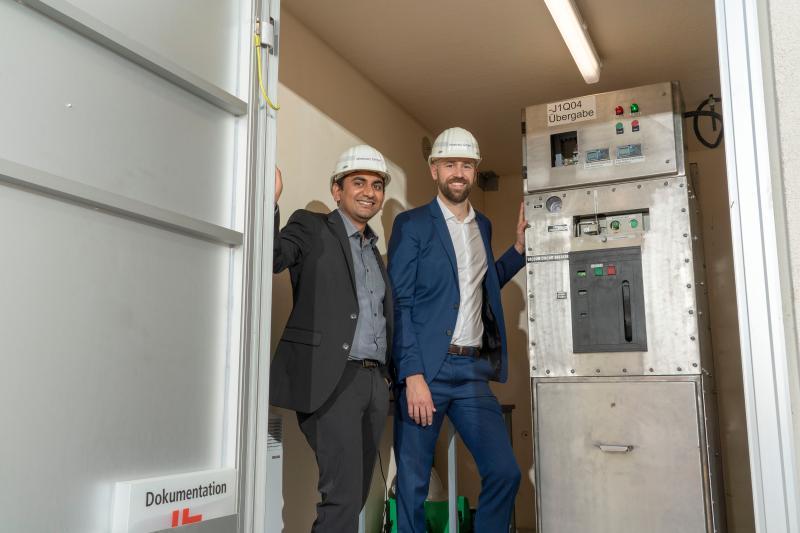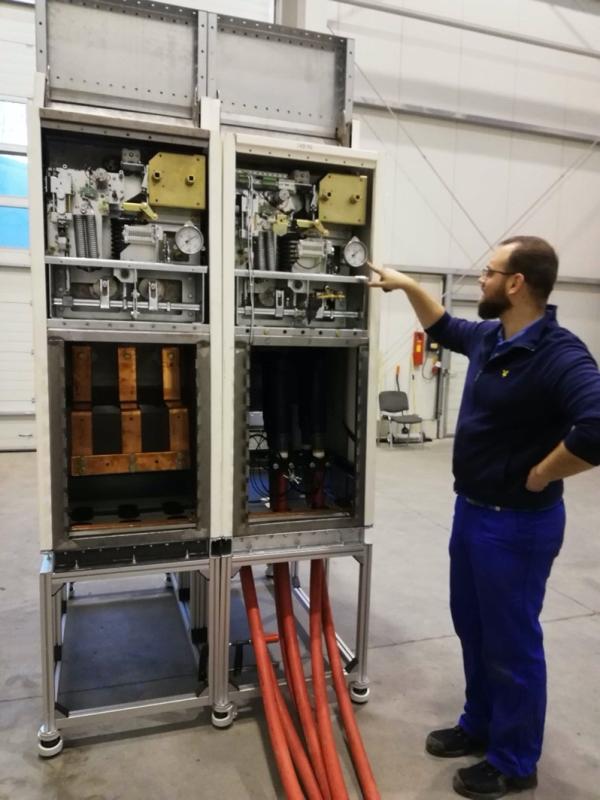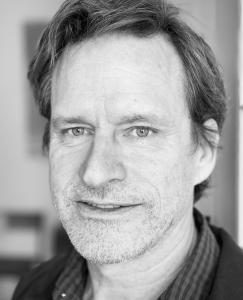German company offers a twist on old power lines by reducing electricity production greenhouse gas
When you flip on a light switch, two pieces of metal meet to connect a low-voltage circuit, and power flows to the light bulb. And when you flip it off, the circuit breaks.
The same basic mechanics apply to the switches for high-voltage systems that feed large buildings, factories and power utilities. Only these switches, called switchgear, weigh 800 to 1,200 kilograms and are bigger than industrial refrigerators. Because there is so much more power in play, the technology is more complex.
Inside many of these giant switchgear is a tank filled with pressurized gas called sulfur hexafluoride, or SF6. This gas acts as an insulator, preventing the electrical current from arcing (acting like lightning essentially) when the metal parts separate or come together.
The problem with these switchgear, which are used all over the world, is that SF6 is the most potent greenhouse gas in the world. One kilogram of SF6 is equivalent to 23,500 kilograms of CO2. Annual SF6 emissions are the equivalent of the CO2 emitted by 100 million cars. Moreover, the use of SF6 globally is expected to grow by 75 percent by 2030 from 2019 levels. Sustainable alternatives are urgently needed.
This is where the story of a Berlin-based company called Nuventura begins.
A safe power solution
Manjunath Ramesh is an electrical engineer who for years worked in the development and refinement of these gas-insulated switchgears, or GIS. He was aware that much of the SF6 released into the atmosphere was coming from these switchgears, and he thought there must be a better way. When he couldn’t make progress within the company where he worked, he quit and moved to Berlin to develop his own prototype. He believed that with some design changes to the switchgear, using highly compressed, dry air could eliminate the need for SF6.
“While I grew up, I saw that pollution, air pollution, was the biggest problem in the world,” Manjunath says of his motivation. Within Nuventura’s switchgear “we replaced the greenhouse gas, SF6, with normal breathing air.”
With two other founders who have entrepreneurial backgrounds, Manjunath created the company in 2017; now Nuventura has 20 employees and has found its first clients.
Fabian Lemke, a founder and the managing director, says it is important that the technology be proven over time to win over clients, whether they are industrial firms or large power companies.

Manjunath Ramesh and Fabian Lemke replaced greenhouse gas with normal air.
The electrical grid is critical infrastructure, and reliability is important. “The thing about electricity and especially about switchgear is it’s basically ‘set it and forget it,’” Fabian says. “So the best thing that can happen is that nothing happens. The clients want to have some experience, they want to see how the gear behaves, and then they are going to make the next step.”
Nuventura was a finalist in the 2021 Social Innovation Tournament, created by the EIB Institute to help entrepreneurs develop creative solutions for the environment and society.
Phasing out dangerous gas
There are two main types of switchgear — these GIS models and another type that is air insulated, but open, and subject to damage from the environment. GIS is the standard in heavily populated areas.
One factor working in Nuventura’s favour is that governments worldwide, including the European Union, want to phase out the use of SF6 as soon as there are reliable alternatives. The European Commission is drafting new F-gas (for all the gases in this family) regulation, and California has already adopted a plan to phase out the use of SF6 by 2025.

Nuventura’s switchgear will help countries phase out the dangerous SF6 gas used in high-voltage power connections.
Another advantage of the Nuventura GIS is that it can be opened for maintenance, and adding monitoring via sensors is a possibility. “Because our tank can be opened, it makes repair and replacing parts possible, increasing the useful life of the switchgear,” Fabian says. “It’s much more in line with the idea of a circular economy.”
More data, less maintenance
Sensors make it possible to transmit data from the switchgear to control centres for monitoring in real time. “One thing that has been quite astonishing about switchgear is that they are relatively stupid,” Fabian says. “There’s nothing but mechanical components in there.”
If switchgear were equipped with sensors, a variety of valuable information could be gathered. Fabian adds that at a minimum, sensors could reduce the need for manual maintenance checks.
The response from Nuventura’s early clients is encouraging. APEX Group has a grid-connected hydrogen power plant at its location in Rostock-Laage, Germany.
The company stores hydrogen and helps other companies and cities develop their own carbon-neutral energy systems.
Earlier this year, the company adopted six of Nuventura’s switchgears with interconnected sensors. With the sensors, APEX can monitor and analyse the condition of the equipment around the clock.
“What convinced us about Nuventura's switchgear are its compact dimensions, which are very similar to those of the classic SF6 GIS, as well as the high degree of flexibility and automation,” says Jörn Hennig, head of engineering at APEX.
